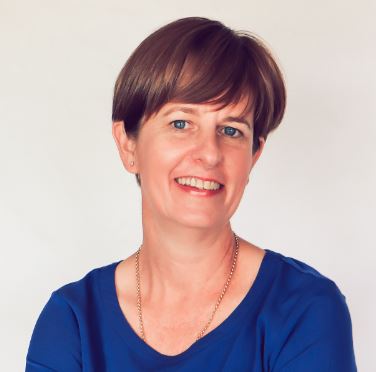On June the 9th, 2022, Associate Professor Brian McIntosh from Griffith University’s International Water Centre, sat down with Dr Margaret Cook, author of 'A River with a City Problem', and recorded a podcast for the Professional Learning Hub’s, The Worker Learner.
The conversation was timely for just a few months earlier South East Queensland and Northern New South Wales (and in particular the town of Lismore) experienced devastating flooding.
As Margaret points out in this short, edited extract of their conversation (scroll to the bottom for the full podcast), the utility of the Brisbane River and Bremer River in Ipswich has shaped the spatial arrangement of our cities, whereas we should have been paying more attention to what the repeated flooding has been telling us.
With flooding continuing to ravage large swathes of Eastern Australia, the time has come for our communities and our leaders to engage in hard conversations.
******
Brian: Margaret is author of a fantastic book. It’s probably got the best book title in the world, it's A River With a City Problem, and you might sort of hear that and think that it's the other way around, but no, it's the right way around it's A River With a City Problem. Margaret is an environmental historian, so maybe before we get into the subject of this podcast, Margaret can you tell us a little bit about what an environmental historian is.
Margaret: I’m an historian particularly interested in people and then place, and the appeal for environmental history for me is that it's about the relationship between those two things.
Brian: Your book is about a particular river, the Brisbane River, can you tell us something about the history of flooding here in South East Queensland?
Margaret: Well, [the river has] had a long, deep history with our Aboriginal history. What I wanted to do was to tell the story of this long history of the river, especially when the British settlers arrive and think “Ah ha, we’ll build a city here”. What could possibly go wrong when you build on a sub-tropical river? Well, as it turns out, lots of things can go wrong. My challenge was to tell the story that we've had many floods in the colonial record. 1841, 1893, 1974, 2011, 2022. They sort of roll off my tongue now but they are memories that people forget.
Brian: So, South East Queensland spans a fairly large area, with quite a few different rivers, quite a diversity of landscape, quite a few towns and cities, from Ipswich and the Bremer right down to the Gold Coast and Brisbane, it’s a place that when you think of cities you probably think of tower blocks, you think a lot about people and houses, but there’s quite a significant diversity of business across that. What can you tell us about the way in which flooding has impacted the different kinds of businesses here in South East Queensland.
Margaret: As you say, the areas are so different and so diverse. It’s really important to remember that. When the settlers arrived they looked at the low lying areas for industry, because the river provides fuel and steam and all the things they needed. So, we get these pockets of light industry. Then in the city areas we get businesses and the retail hub, and initially a lot of the retail was on the south side of Brisbane, but in the 1893 flood they got so badly affected everyone moved to the north side. So, we end up with that retail hub and business heart and the government centre is in the middle, which is very flood prone. And then as we move up the reach we get different businesses. So you might get the heavier industry down towards the port. And as you move up it gets to be lighter industry and then at the headwaters it’s more agricultural. So, all of those businesses get affected in varying degrees, and in different scales too. Sometimes they’re enormous businesses and sometimes they’re just a small little retailer who’s trying to make a dollar and he’s beside a creek. We didn’t mention the creeks before. We’ve got 22 creeks to throw into that little mix too. So, we can get flooded in many ways. And all of those businesses are along that waterway partly for historical reasons of transport and fuel, but also it’s scenic, it’s where people want to recreate, so that’s where we have pubs and hotels, and the retails places as well. Where businesses are and where we work are a factor of history.
Brian: So, you’re indicating that to some extent flooding has driven the spatial pattern of cities like Brisbane.
Margaret: Not so much the flooding unfortunately, but the river definitely has, because people moved with the river, because the river was our means of transport, but we sort of ignored the flooding, so unfortunately that’s something we overlooked and businesses tend to go back in the same place each time.
Brian: The other area I hear about quite regularly in relation to flooding in Queensland is Ipswich.
Margaret: Well, I live in Ipswich so you chose a great place to ask me about. So, I do know it quite well. And yes, the inner city area of Ipswich floods a lot. Ipswich is on the Bremer River, and the Bremer River isn’t regulated. It’s one of the few rivers in Queensland that doesn’t have a dam on it at all. And when we get the Lockyer rain and the Brisbane rain coming in, it sort of gets this backwater so Ipswich is particularly affected by flood. And, as you say, it’s the business area, it’s all the shops, it’s all the retail, it’s the businesses, it’s where the banks are, so all of those areas get really badly affected and so the floods in Ipswich can actually shut the city down quite quickly.
Brian: Is that repeated flooding having an impact on the commercial attractivity of Ipswich city centre? Can you notice a desertion of that city centre by businesses because it’s too costly for either direct recovery or insurance?
Margaret: Absolutely. In fact there’s a really good example, or a sad example nonetheless, but across the road from Coles there are three businesses that have not re-opened yet, and that’s four months on. And I’m told they won’t reopen because they can’t get insurance. They’d only just really recovered from the 2011 flood, and they’re small businesses. One is a Vietnamese family, the whole family work in that business, and they just can’t afford to move back. So we’re actually seeing more empty shops than we’ve seen in Ipswich before.
Brian: There is a kind of footfall density required for retail type businesses. If you don’t have enough people visiting an area and people visit an area because there are businesses, and the businesses move away, that can have quite a profound and possibly irreversible impact.
Margaret: Customers change their habits very, very fast don’t they, so if they can’t get their bread at that bakery they’ll find another bakery quite quickly. So, footfall is very, very important, and so if you’ve got these missing teeth in the smile of the main street, you might describe it as, you don’t go back to the main street. You go somewhere else.
*****
Listen to the full podcast here.
Dr Margaret Cook
Margaret Cook is a Research Fellow in the Australian Rivers Institute, Griffith University and a La Trobe University Honorary Research Fellow. Her research interests include histories of natural disasters, water, and rivers. Her recent books are A River with a City Problem, Disasters in Australia and New Zealand and Cities in a Sunburnt Country.
Associate Professor Brian McIntosh
Brian is a water science and management educator, researcher and capacity developer with significant experience in the design and delivery of applied and inter-disciplinary education, training and capacity development programs for individuals, organizations and sectors. He is also a recipient of international and national research awards for work done in water sector innovation and sustainability, and in the design and use of information support tools and collaborative processes to improve decision making in complex and contested areas of water management.
Professional Learning Hub
The above article is part of Griffith University’s Professional Learning Hub’s Thought Leadership series.
The Professional Learning Hub is Griffith University’s platform for professional learning and executive education. Our tailored professional learning focuses on the issues that are important to you and your team. Bringing together the expertise of Griffith University’s academics and research centres, our professional learning is designed to deliver creative solutions for the workplace of tomorrow. Whether you are looking for opportunities for yourself, or your team we have you covered.

